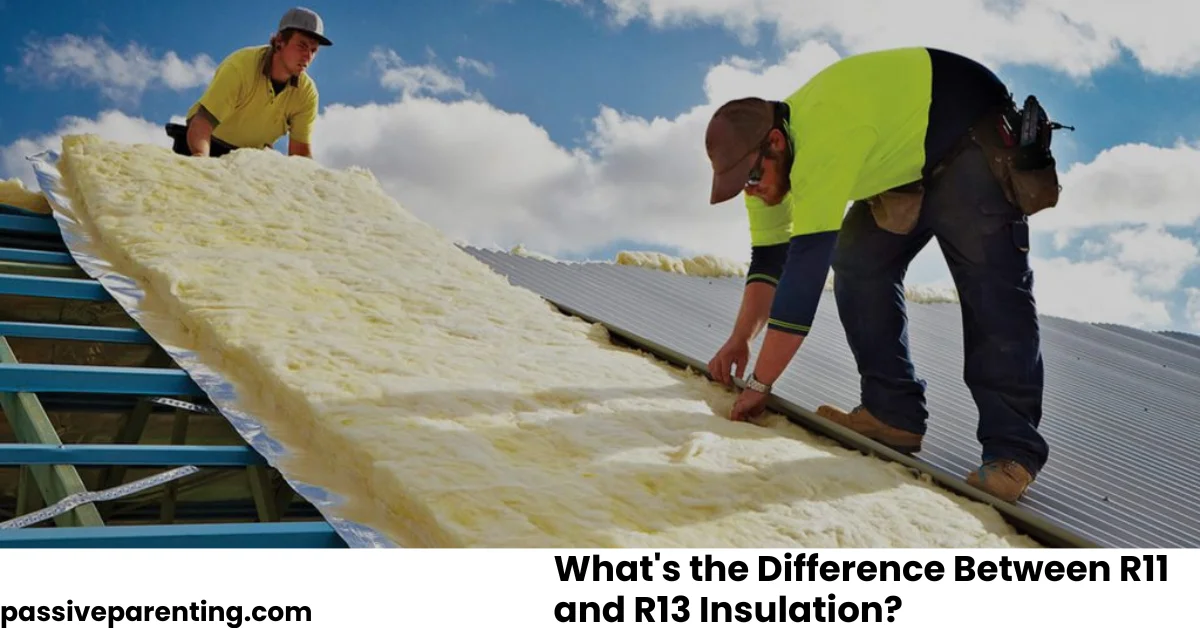When planning a construction or renovation project, insulation plays a critical role in comfort, energy efficiency, and long-term cost savings. Homeowners often compare R11 vs R13 insulation, especially for walls framed with 2×4 studs. While they look similar at first glance, their differences in thermal performance, density, and recommended applications can significantly affect how your home performs in different climates.
This comprehensive guide explores the difference between R11 and R13 insulation, government guidelines, cost considerations, and real-world use cases—so you can make the right decision for your home improvement project.
Understanding R-Value in Insulation
Before comparing R11 and R13, it’s essential to understand the concept of R-value, which measures thermal resistance.
- Definition: R-value indicates how well an insulation material resists heat flow.
- Performance Rule: The higher the R-value, the greater the insulating power.
Examples of R-Values
- R11 Insulation → Provides a thermal resistance of 11.
- R13 Insulation → Provides a thermal resistance of 13.
Although both options fit into standard 2×4 wall cavities, R13 offers slightly denser insulation fibers, making it more effective in slowing heat transfer.
👉 For a deeper understanding of insulation basics, you can explore Energy.gov’s guide on insulation.
Key Differences Between R11 and R13 Insulation
At a glance, R11 and R13 insulation share similarities, such as thickness and application in wall cavities. However, their differences determine where each is most suitable.
Comparison Table: R11 vs R13 Insulation
| Feature | R11 Insulation | R13 Insulation |
|---|---|---|
| Thermal Resistance | Lower (R-11) | Higher (R-13) |
| Thickness | ~3.5 inches | ~3.5 inches |
| Density | Less dense | Denser, more fibers |
| Typical Use | Interior walls, basements | Exterior framed walls |
| Soundproofing | Slightly better for sound | Better thermal protection |
| Cost | Slightly cheaper | Slightly more expensive |
Even though the thickness is identical, R13 achieves better thermal performance due to its increased density.
Government and Code Recommendations
Building codes and energy standards emphasize energy efficiency, which is why R13 insulation is generally favored for exterior walls.
Key Recommendations:
- ENERGY STAR® Guidelines
- The U.S. Environmental Protection Agency (EPA) and Department of Energy (DOE) recommend R13 insulation for 2×4 exterior walls in most U.S. climate zones.
- Full details are available on the ENERGY STAR R-Value Guide.
- Massachusetts Building Code
- Requires R13 as the minimum standard for new residential wall assemblies.
- North Dakota Field Study
- Found that 73% of new homes use R13 or higher for wall cavities.
These recommendations reflect a nationwide trend toward using higher R-values for better efficiency and compliance.
Climate and Regional Considerations
Your climate plays a major role in deciding whether R11 or R13 is right for your project.
Where R11 May Be Suitable
- Warmer climates with mild winters.
- Interior walls where thermal insulation is less critical.
- Basements or partitions where soundproofing is the main priority.
Where R13 Is Essential
- Colder climates where preventing heat loss is crucial.
- Exterior framed walls in regions that experience harsh winters.
- Areas where building codes require a minimum of R13.
👉 To find the best insulation recommendation for your location, use the DOE’s Insulation Climate Zone Map.
Energy Savings and Cost Considerations
A common concern for homeowners is whether upgrading from R11 to R13 is worth the cost. While R13 is slightly more expensive, the long-term benefits usually outweigh the initial price difference.
Cost Breakdown Example
- Insulating 500 sq. ft. of wall space:
- R11 → Lower upfront cost.
- R13 → Around $40–$60 more, depending on brand and material.
Energy Savings Potential
- According to Energy.gov, a well-insulated home can reduce heating and cooling bills by 15% or more.
- Over the lifetime of a home, this translates to thousands in energy savings, making R13 a smarter investment.
Real-World Insights and Homeowner Preferences
Contractors and homeowners often share consistent feedback about choosing between R11 and R13.
Common Insights:
- R13 is the better choice when opening up walls or doing new construction.
- R11 still has value for interior walls or projects where cost and soundproofing matter more than thermal performance.
- Homeowners emphasize that the small cost difference isn’t worth sacrificing comfort and efficiency.
Bonus Factor: R-Value Isn’t Everything
While R-value is important, other factors also influence insulation performance.
Key Considerations Beyond R-Value:
- Air Sealing → Drafts and air leaks can undermine insulation performance.
- Moisture Control → Proper vapor barriers and ventilation prevent mold and preserve insulation effectiveness.
- Installation Quality → Even high R-value insulation won’t work properly if poorly installed.
For the best results, insulation should always be paired with air sealing and moisture management practices.
When Should You Choose R11 vs R13?
Choose R11 Insulation If:
- You are insulating interior walls.
- You are finishing a basement wall.
- You are prioritizing soundproofing over thermal efficiency.
Choose R13 Insulation If:
- You are insulating exterior 2×4 framed walls.
- You want better energy efficiency and long-term savings.
- You want to meet modern building code requirements.
Final Thoughts
The difference between R11 and R13 insulation lies primarily in thermal resistance and density. While both fit into 2×4 wall cavities, R13 provides superior thermal performance, energy savings, and compliance with modern codes.
- R11 → Ideal for interior walls, soundproofing, and budget-conscious projects.
- R13 → The recommended choice for exterior walls, long-term energy savings, and building code compliance.
Ultimately, choosing R13 insulation is a smart investment in comfort, efficiency, and sustainability.




